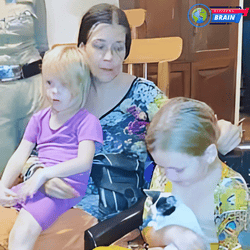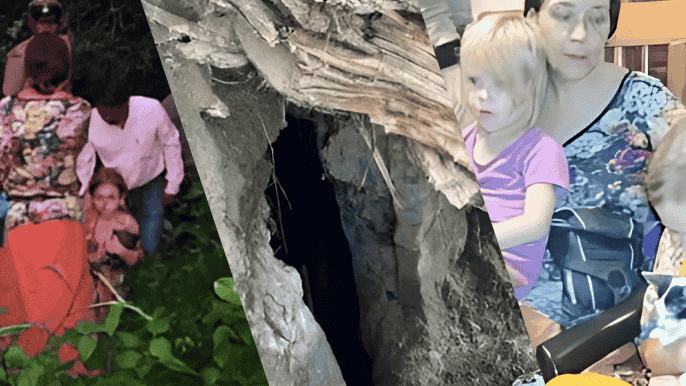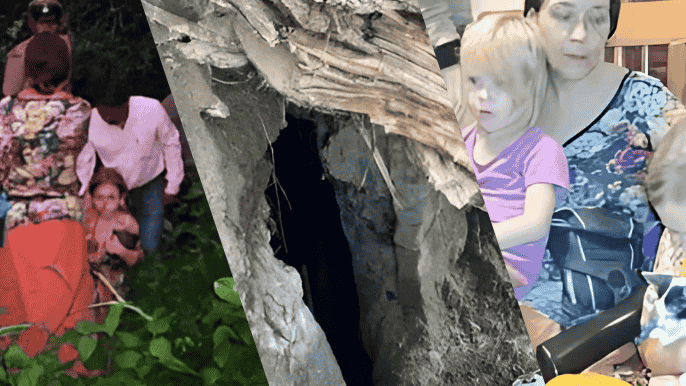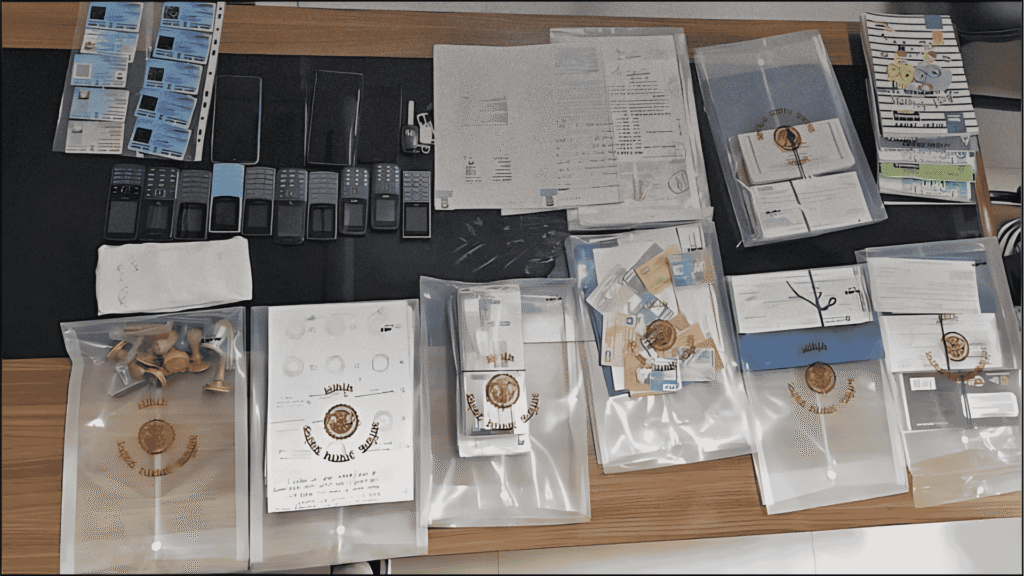In the heart of the Uttara Kannada district of Karnataka, Hello Friends captured the idea and sparked discussions on the boundaries of spirituality, survival and personal freedom.

On July 9, 2025, a 40 -year -old Russian woman Nina Kutina and her two young daughters Priya (6) and Amma (4) were found to be living in a remote cave in the Ramathirtha Hills of Kumata Taluk. Kutina, who lived there for about two weeks, had chosen this separate, landslide forests to follow the spiritual peace after the visa expired in 2017. In this report we put forward the extraordinary situations of their invention, their unconventional lifestyle, the legal complexities of their situation and the broader consequences of their story.
Accidental discovery in the forest of a Russian woman
Ramatheertha hills are unlikely to be a place of human dwelling with dangers such as dense forests, steep rocks and poisonous snakes and recent landslides. However, Gokarna police saw a surprise scene in a regular patrol, inspired by safety care after a landslide and the tragic drowning of two medical students months ago. The saris and clothes hanging outside the cave gave a hint that humans were. When he rushed to the spot, Nina found Kutina and her two daughters, who had converted the cave into a temporary spiritual sanctuary when they watched the place.
Kutina, also known as Mohi, lived in the cave for about two weeks, although she had visited several times before. This invention was made by Uttara Kannada Police Superintendent M. Narayana -led officers were not allowed to trust. “We are shocked to find a woman and two young children in such a dangerous area,” Narayana said. “How they survived. What they ate – it was a mystery.” The dangerous place of the cave, along with the presence of young children, prompted immediate action to ensure their safety.
Also read: The Dharmasthala Soujanya Case: Truth Behind the Tragedy
Russian woman’s spiritual retreat in a Karnataka cave

Inside the cave, Kutina created a minimalist but deliberate habitation. The Rudra idol (represents Lord Shiva) was at the heart of her spiritual practice, surrounded by Russian books and photos of Hindu deities.
The deepest leaning of Hinduism, which had attracted her to India almost a decade ago, was performing her daily Hindu rituals, worship and meditation. The family survived in quick noodles, some groceries and wood were stored for cooking. Plastic sheets acted as a bed and natural light lit their days, with candles used in moderation.
Despite the harsh conditions, Kutina maintained a constructive routine for her daughters. He was practicing yoga, recited the film, song, mantras, and engaged in physical exercises, which is evidenced by the photos on his phone showing a happy, healthy children. Kutina’s impunity was significant
Also Read: Cases against Sameer MD for exposing the Truth…
When warned of the snakes, he calmly said, “Snakes are our friends and will not harm us unless we are bothered by them.” She described the cave as a “comfortable, comfortable home” in a WhatsApp message to her friend, only regretted that there was a lack of modern amenities. Rainwater sound and forest hugs were sources of joy and energy, although the risks of the area – landslides and wildlife – made it a home for children.
Immigration status and legal issues
The crucial aspect of this case is Kutina’s immigration status. He entered India on a valid trade visa from October 18, 2016 to April 17, 2017. After its expiration, he received an exit license from the Regional Registration Office (FrRO) in Panaji, Goa, and traveled to Nepal for some time before entering India on September 8, 2018. Initially, Kutina claimed that it was lost in her passport and visa jungle, but a joint search of the police and forest officials seized documents near the cave, confirming the visa violation.
The spiritual inspiration and background of a Russian woman
Nina Kutina traveled to the cave when he arrived in India on a business visa in 2016, initially exploring the tourist and restaurant zones in Goa and Gokarna. Enjoyed by Hinduism and Indian spiritual traditions, he was deeply immersed in spiritual practices, and eventually chose a secluded life in nature rather than urban life.
After his visa expired in April 2017, he avoided the detection of immigration officers, avoiding hotels and crowded areas, instead of choosing to live in the forests. His journey was taken to Gokarna, the sacred coast of the city, known for its religious and meditation importance from Goa, where he sought spiritual peace.
The commitment to spirituality in Kutina’s cave system was clear, including Russian books, photos of Hindu deities, and Rudra idol. He expressed deep contact with nature, described himself as “devastated” about the separation of the forest and said in the message that people are more afraid of the animals.
Their spiritual favors were so strong that they had been hiding in India for eight years, with both daughters born in India without records. He refused to discuss the father of the children so that the authorities were unanswered about their personal circumstances.
Also read : 8th Pay Commission Employees Salary Hike: What You Need to Know
Our Final Thoughts
Nina Kutina’s life in the Karnataka Cave is a testament to how far one can go to follow spiritual peace. Their story has an in -depth connection with elasticity, faith and nature, but also a violation and risk of law. When they and his daughters face deportation, their future remains uncertain, but their journey has left an indelible mark on those who encountered it. The Ramatheertha hills, which were once the backdrop of silence for their spiritual journey, are now echoed with questions about the boundaries of freedom, the responsibilities of the parent, and the complexities of living on the verge of society.



